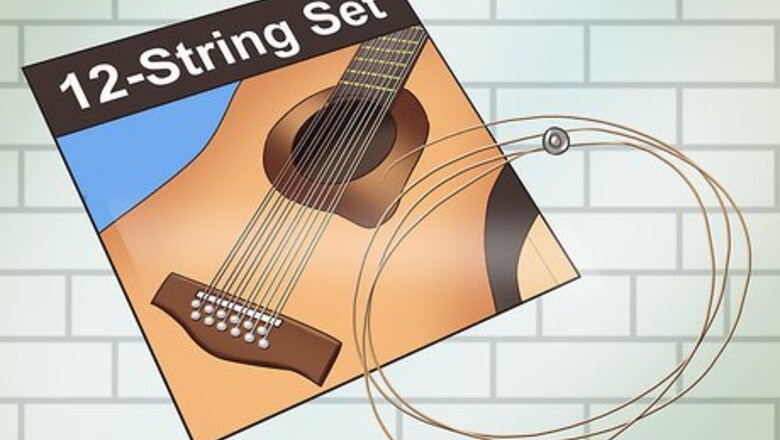
views
Restringing Your Guitar

Buy a set of 12-string strings. You can buy 6-string sets, often branded "Nashville tuning" or "high-strung tuning" sets. However, a 12-string set assures that your gauges are balanced. Since you're only stringing a 6-string guitar, you'll also get a regular gauge set along with the high-strung set. If this is your first time tuning a guitar to Nashville tuning, you may want to get 2 sets in case you accidentally snap a string. Open the package, take the 6 lowest (or thickest) strings and set them off to the side (or put them back in the package. The strings you'll be using are the 6 highest strings.

Remove the old strings from your guitar. Find a large table or other flat surface to work on, and lay down a towel or blanket to keep your guitar from getting scratched. Slowly loosen each string from the peg, then remove the bridge pin to take off the string. While the strings are off, take the opportunity to clean and polish your guitar. Don't get any polish on the fretboard. Use conditioner or an oil and conditioner product designed specifically for fretboards. Wipe your strings down and carefully coil them so you can use them again. Be careful not to kink them.
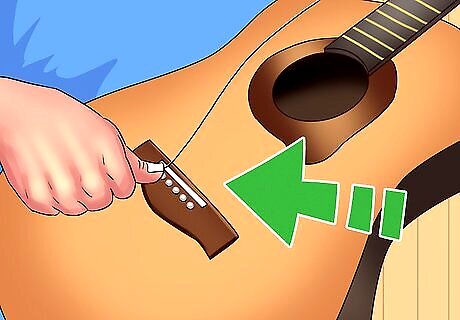
Unwrap the lowest E string and pop it into the bridge. Take the largest string first and gently uncoil it. Insert the ball head into the furthest left hole in the bridge, then gently press the bridge pin into the hole. Tug on the string to make sure it's seated correctly. If the bridge pin starts to pop out, gently press it back down with your thumb. If you use any additional force, you could snap the bridge or cause additional damage to your guitar.
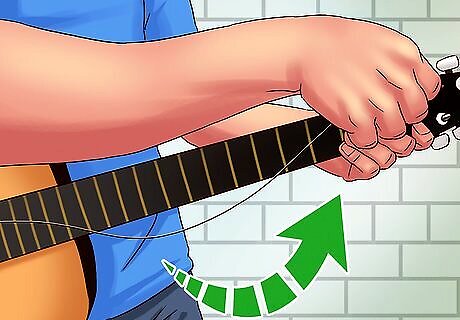
Thread the string around the appropriate tuner and wind it up. Pull the string up from the bridge through the center of the peghead, then thread the string toward the tuner's knob. Bend a bit of the string up towards the top of the peghead, then pass the string over and under itself. Wrap the string around itself and hold the tension as you wind the string down the shaft of the tuning peg. Use a string winder to speed up the process of winding strings. They come standard in many beginner guitar sets, or you can buy one from your local music store. Don't put too much tension in the string until you've got all of the strings on the guitar. It can throw your guitar out of balance.

Repeat the process with the other 5 strings. Once you've got your low E down, you've just got 5 more to go. The process will become smoother with practice. Be especially careful with the thinnest strings, as they can easily snap while restringing. Wrapping the thinnest strings twice before winding down the peghead can help control slippage.
Tuning Your Guitar
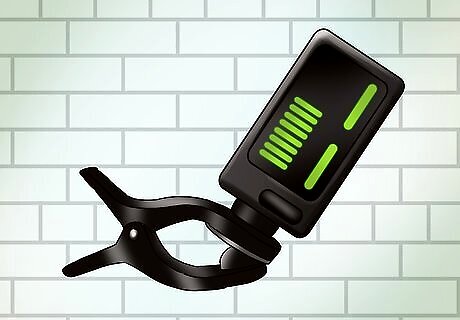
Use a quality tuner to avoid snapping strings. Because you're tuning the bottom 4 strings a full octave higher, you could easily snap the strings while tuning. An electronic tuner is generally safer than tuning by ear (unless you have perfect pitch). There are free online or mobile app tuners. However, since these rely on your computer or smart phone's internal microphone, they aren't always accurate. Clip-on or handheld chromatic tuners are generally better.
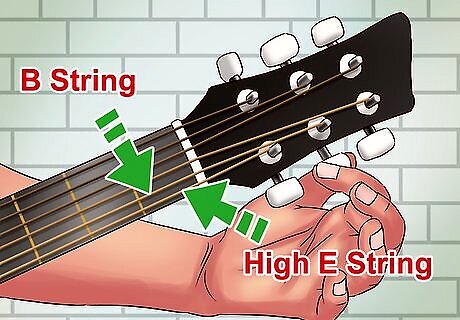
Tune the high E and B strings to regular pitch. In Nashville tuning, your high E and B strings are tuned exactly as they would be on a regular guitar. Go slowly, making short quarter-turns. Take care not to apply too much tension too quickly, or the string could snap. If you do snap a string, replace it with another one and continue on. There's no need to restring the whole guitar.

Raise the remaining strings an octave higher than a regular guitar. Your next 4 strings are tuned to the same notes as a regular guitar. However, they are an octave higher than a regular guitar. As with your E and B strings, go slowly. Once you've gotten the lowest E in tune, your high E and B strings have likely slipped a little. Gently turn the knob to bring them back into tune.

Stretch your strings gently and retune them. Hold your guitar in regular playing position, then gently pull the lowest E string away from the guitar, about halfway down the length of the guitar. Repeat the process with each of the other strings. Take care not to pull too far – you could snap the string. Pull the string just about a thumb's thickness away from the fretboard. Tension them up a little and stretch them again. This will help them stay in tune longer. Then get them back in tune again and you're ready to start playing.
Playing with Nashville Tuning
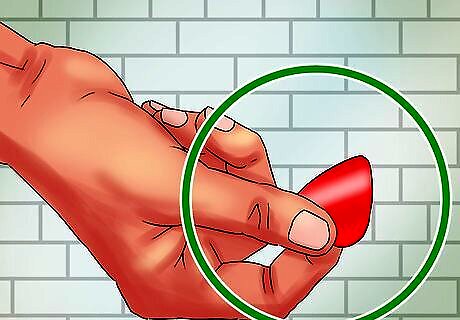
Use a thin pick for a lighter sound. The thin, high-pitched strings of a Nashville-tuned guitar sound light and airy when a thinner pick is used. The result is more of an ethereal sound than you would expect. With a thicker pick, you'll likely get a more jangly, twangy sound. If you're playing country music, you may prefer this sound.
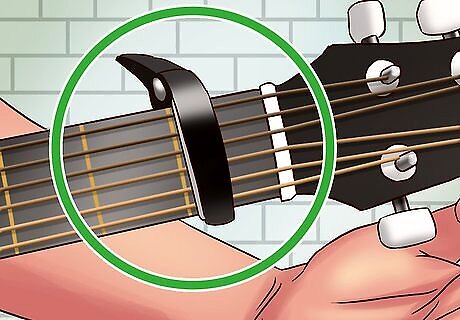
Try a capo to produce a mandolin-like sound. The capo replaces a bar you would make with your finger for a bar chord. When you use a capo, you can make open chords higher up the neck of your guitar. The capo allows you to make the same chord shapes as you would if you were playing the basic open chord from the nut. If you don't have a capo, you can get one online or at any local guitar or music shop.

Double your Nashville-tuned guitar with a standard-tuned guitar. When you play a Nashville-tuned guitar and a standard-tuned guitar at the same time, you get the sound of a 12-string guitar. However, since two guitars are being played, the sound is fuller than you would get from a single 12-string guitar. If you have a friend who plays guitar, you can play together. The upper and lower parts won't sound the same as if one person was playing a 12-string, though, because no two people play guitar exactly the same way. If you have basic recording equipment, you can record yourself playing the Nashville-tuned guitar, then lay over a recording of yourself playing the same song on a standard-tuned guitar. This comes closer to approximating the sound of a 12-string.




















Comments
0 comment